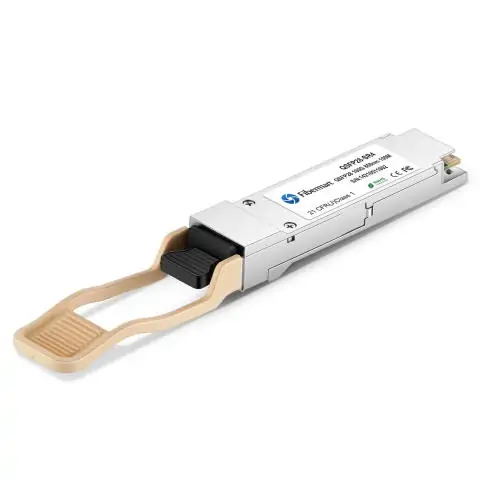Why Are Fiber Optic Transceivers So Important Today?

In today’s fast-moving digital age, speed and reliability in communication have become essential. Whether it’s watching movies online without buffering, hosting a video conference, managing a busy data center, or enabling smart city technology, there’s one small yet powerful device quietly making it all possible—fiber optic transceivers. These compact pieces of hardware are the backbone of modern networking, helping transmit massive amounts of data with speed and precision.
Fiber optic transceivers act as a bridge between networking devices and fiber optic cables. Their main job is to convert electrical signals from your equipment into light signals that can travel through fiber optic cables, and then convert them back to electrical signals at the other end. It sounds simple, but this process is what enables us to enjoy lightning-fast internet, crystal-clear video calls, and real-time online gaming experiences.
One of the biggest reasons fiber optic transceivers are so important is speed. Unlike traditional copper cables, which have physical limits due to resistance and interference, fiber optics transmit data using light. This allows for much higher speeds and greater bandwidth, supporting everything from everyday browsing to complex business operations that move terabytes of information. Depending on the type, fiber optic transceivers can handle anything from a few megabits per second to hundreds of gigabits per second.
Another key benefit is distance. While copper cables lose signal strength over long distances, fiber optics can carry data for miles without degradation. This makes fiber optic transceivers the ideal choice for large-scale networks, whether connecting different floors of a building, linking offices across a city, or even sending information between countries. This long-distance capability is especially critical for telecommunications companies, internet service providers, and enterprises with multiple branches.
Reliability is also a major advantage. Fiber optic systems are immune to electromagnetic interference, which means the data transmission is stable even in environments filled with electrical equipment. Hospitals, financial institutions, airports, and other mission-critical facilities rely heavily on fiber optic transceivers to ensure uninterrupted communication and data transfer. Even in areas with extreme weather conditions or heavy machinery, fiber connections remain consistent and dependable.
There’s also a wide variety of fiber optic transceivers to suit different needs. SFP (Small Form-factor Pluggable) modules are widely used because they are compact and easy to swap without shutting down the network. SFP+ models provide higher speeds, while QSFP and CFP modules are designed for even greater performance demands. This flexibility means organizations can choose transceivers that perfectly match their current needs and easily upgrade in the future without replacing the entire infrastructure.
Cost-effectiveness has improved dramatically over the years. When fiber optic technology first emerged, it was considered expensive and mostly reserved for large organizations. Today, prices have dropped significantly, making fiber optic transceivers accessible to small businesses and even home users. Their modular design also helps reduce costs because you can upgrade or replace just the transceiver instead of the entire networking system.
Fiber optic transceivers are also known for their durability. They can handle temperature changes, humidity, and rough outdoor conditions better than many traditional networking components. This makes them suitable for use in industrial sites, remote installations, and outdoor networks where environmental challenges are a factor. Many are built to strict standards to ensure they work flawlessly for years.
Energy efficiency is another reason why these devices are in high demand. Since they use light to transmit data, they consume less power than copper-based systems, particularly over long distances. Lower energy consumption translates into reduced operating costs and a smaller environmental footprint, which is becoming a priority for businesses aiming to be more sustainable.
Their importance is growing even more with the rise of new technologies. The rollout of 5G networks depends heavily on fiber optic transceivers to handle massive amounts of data at lightning speed between cell towers and network hubs. Cloud computing services also rely on them to keep data moving quickly and securely between servers and users. Without them, the smooth performance of services like video streaming platforms, large file sharing, and virtual workspaces wouldn’t be possible.
Smart cities are another example of where fiber optic transceivers shine. Intelligent traffic systems, public Wi-Fi, smart lighting, and security networks all depend on fast, reliable data transmission. Fiber optics ensure that these systems can communicate in real time, making cities more efficient, safer, and more connected.
Even at home, fiber optic transceivers are making an impact. More people are working remotely, attending online classes, and using video conferencing tools than ever before. Having a stable and high-speed connection makes these activities seamless. With fiber optic internet, households can stream movies, play online games, and hold video meetings all at once without slowdowns.
When choosing a fiber optic transceiver, it’s important to consider speed, distance, and compatibility with existing hardware. For example, single-mode transceivers are ideal for long-distance transmission, while multi-mode transceivers work well for shorter distances within buildings. Matching the right transceiver to the right fiber cable type ensures top performance and avoids compatibility issues.
Maintenance for fiber optic transceivers is straightforward. They require occasional cleaning to prevent dust from affecting signal quality, and proper handling to avoid damage. Since they’re modular, replacing a faulty unit is quick and doesn’t require taking the entire network offline. This ease of maintenance adds to their appeal for both large enterprises and smaller setups.
Looking toward the future, fiber optic transceivers will continue to play a central role in the world’s communication systems. As we move toward technologies like virtual reality, augmented reality, AI-powered applications, and autonomous vehicles, the need for ultra-fast, low-latency connections will only grow. Fiber optic transceivers will remain a critical link in making these advancements possible.
In many ways, these devices are the unsung heroes of the internet age. We rarely think about them, yet they work tirelessly behind the scenes to ensure that our digital world runs without interruption. Whether you’re a business owner, a gamer, a student, or simply someone who enjoys browsing the web, chances are that fiber optic transceivers are playing a key role in your online experience.
So the next time you enjoy a flawless video stream, a smooth online meeting, or a quick file download, remember that these tiny devices are helping make it happen. Fiber optic transceivers are not just important—they are essential to the way we connect, communicate, and share in the modern world. Their role will only become more significant as our hunger for speed and reliability continues to grow, ensuring they remain at the forefront of our connected future.
الأقسام
إقرأ المزيد
As we spend a significant portion of our lives sleeping, it's no surprise that our mattresses accumulate a substantial amount of dirt, dust, and allergens. In fact, the average mattress can harbor millions of dust mites, mold, and mildew, which can lead to a range of health issues, from allergies and respiratory problems to anxiety and depression. In this article, we'll explore the...

Le monde du vapotage évolue rapidement, et la puff 20000 s’impose aujourd’hui comme l’une des innovations les plus impressionnantes du marché. Conçue pour offrir jusqu’à 20 000 bouffées, elle combine performance, autonomie et une palette de saveurs incomparables. Pour les amateurs de vape qui recherchent une expérience à...

Executive Summary Acid Proof Lining Market : The acid proof lining market is expected to witness market growth at a rate of 3.57% in the forecast period of 2021 to 2028. Data Bridge Market Research report on acid proof lining market provides analysis and insights regarding the various factors expected to be prevalent throughout the forecast period while providing their impacts...

Selling your private home quick whilst getting the first-class possible fee is each house owner’s goal—in particular in a competitive marketplace like Tampa, Florida. But whilst buyers stroll via the door, first impressions are the whole thing. One of the most effective gear at your disposal is home staging. By staging your home correctly, you may sell house fast Tampa Fl without...

Global Executive Summary Commerce Cloud Market: Size, Share, and Forecast Data Bridge Market Research analyses that the commerce cloud market will exhibit a CAGR of 22.7% for the forecast period of 2021-2028. Therefore, the commerce cloud market value would stand tall by USD 68.35 billion by 2028. While preparing the first class Commerce Cloud Market report, all the necessities and...




